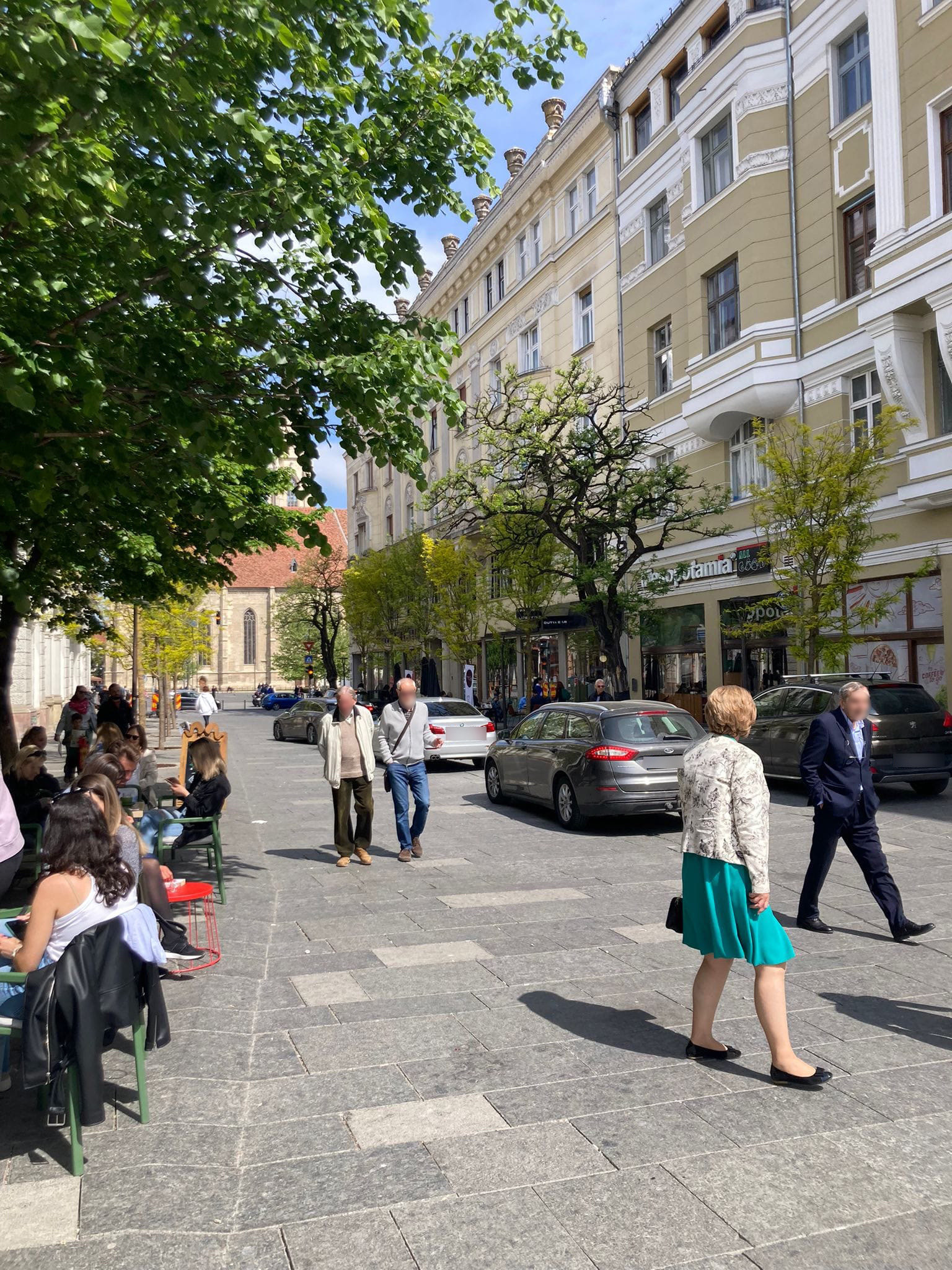It has been just a few weeks since Strada Universității transformed into a pedestrian haven, yet the space is already cluttered with vehicles. Despite the street's closure to cars, designed to ensure access only for residents and specific services, some motorists seem to have missed the memo. The intended pedestrian paradise now faces the chaos of cars parked haphazardly and driving through areas meant for leisurely walks, terraces, and urban furniture, all under the seemingly indifferent gaze of nearby parked police.

One local's frustration surfaced on Facebook: “The mayor's office is very good at enforcing the law, that is, respecting the pedestrian zone,” a statement dripping with irony given the visible violations.
This isn't the first time Cluj-Napoca has faced such issues. Strada Hermann Oberth saw similar challenges until a semi-permanent police presence curtailed illegal parking. The city plans to open a multi-storey car park on Strada Avram Iancu soon, but parking struggles persist. Mayor Emil Boc’s initiative aims to cultivate a “walkable city,” echoing the pedestrian-friendly atmospheres of modern capitals, encouraging residents to leave their cars and embrace public transport and walking.
Images Source: Facebook
However, transitioning from a car-centric to a pedestrian-oriented lifestyle has proven challenging. The city's efforts to improve air quality and reduce congestion are hindered by the enduring habit of driving, despite significant upgrades to public transport infrastructure.
Critics of pedestrianisation, like a vocal Facebook user, argue that these changes do more harm than good: “Traffic flow has been seriously affected… you have to travel more kilometers, so you'll burn more fuel. When you want to do such ‘pedestrianisations', the first thing is to offer alternatives. This isn't happening in Cluj.” They suggest that pedestrianisation is a veneer of modernity that fails to consider practical impacts on daily life, particularly for local businesses which suffer from reduced accessibility.
Despite these criticisms, pedestrian zones have shown potential economic benefits. More space for terraces and increased foot traffic make these areas more attractive to shoppers and diners, contributing positively to local businesses. Yet, the success of such initiatives hinges on proper enforcement and public cooperation. If authorities do not take a proactive approach, there's a real risk that these spaces could revert to their former congested state, undermining the benefits of pedestrianisation.
As Cluj-Napoca continues to expand its pedestrian zones, it must address these challenges head-on. Members of the public can also pitch in by reporting issues of illegal parking via the “My Cluj” platform. The city's goal of transforming into a vibrant, walkable urban area is still within reach, but it's clear that there's a need to address concerns of both pedestrians and vehicle owners.



